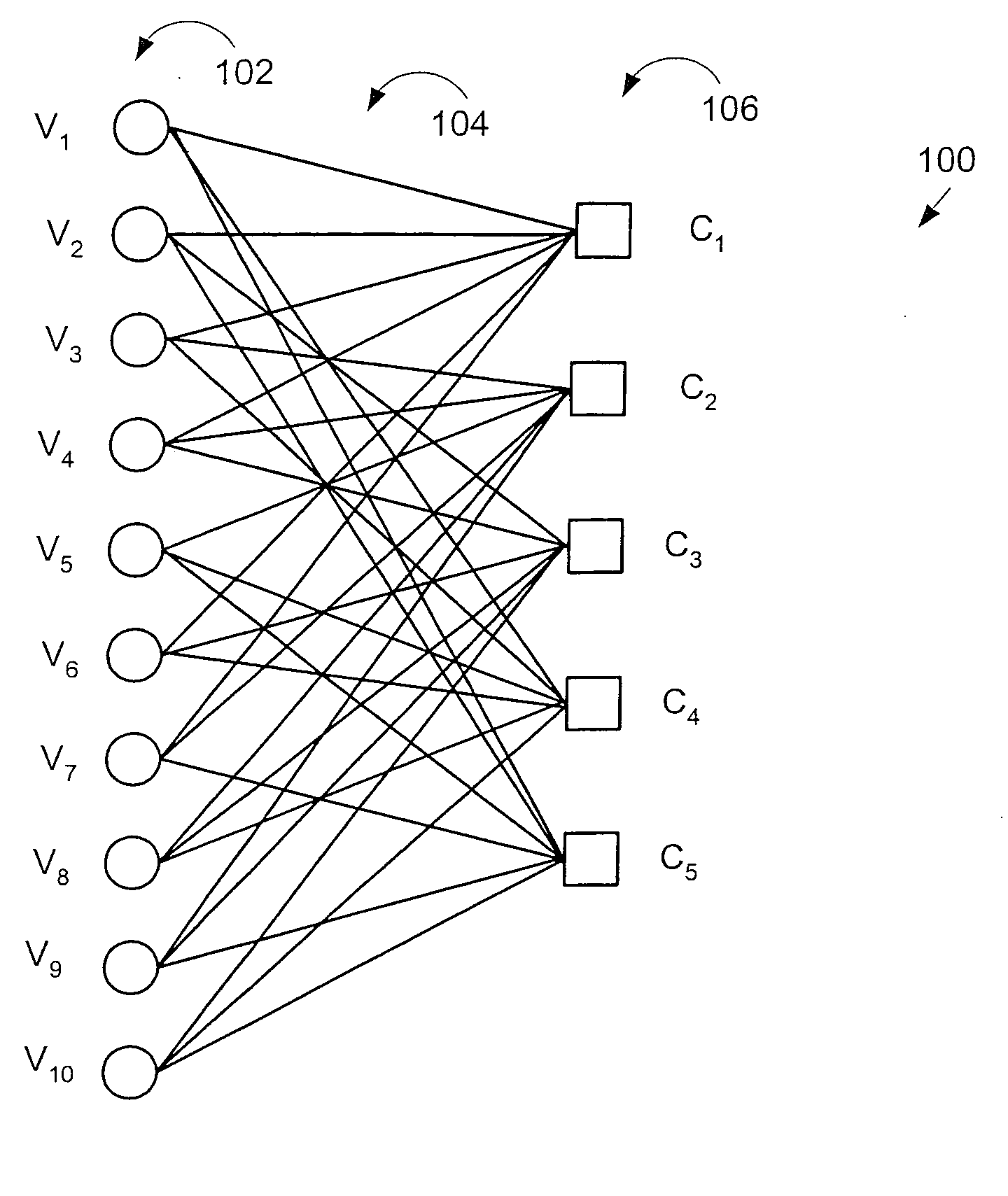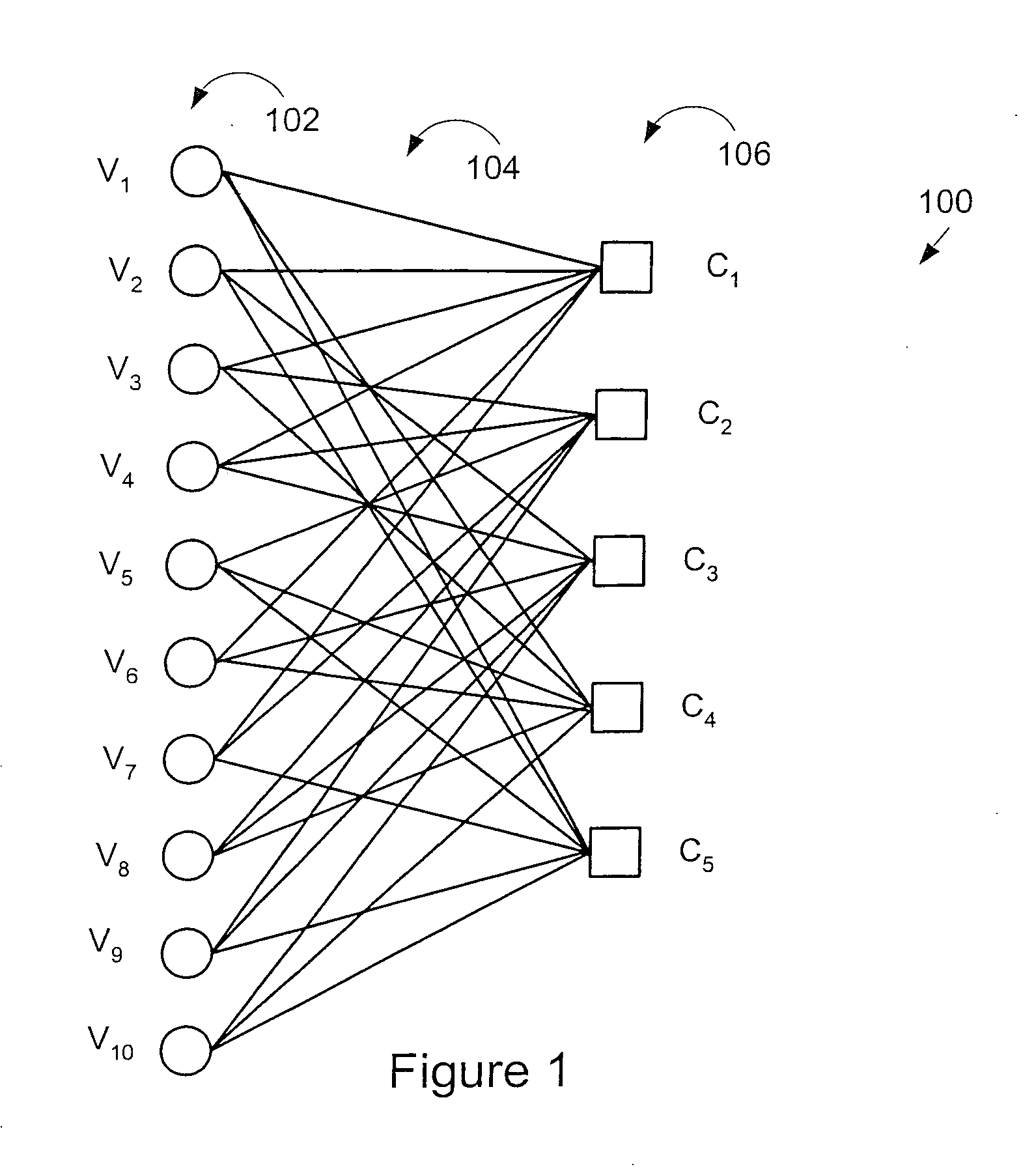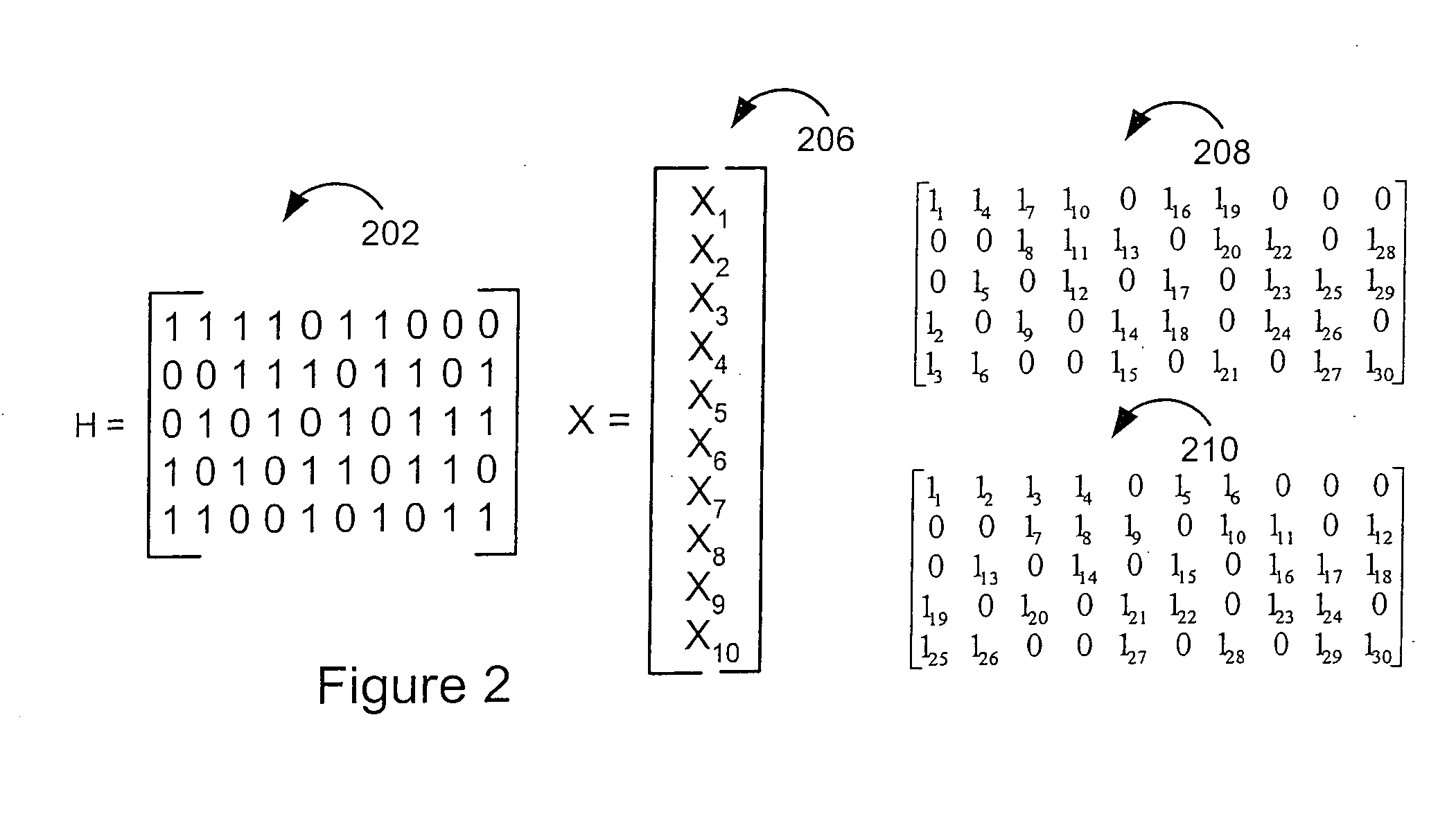Node processors for use in parity check decoders
a parity check and decoder technology, applied in the field of node processors for use in parity check decoders, can solve the problems of implementing the algorithm that affects the function f and its inverse, and achieves the effect of reducing the complexity of the implementation
- Summary
- Abstract
- Description
- Claims
- Application Information
AI Technical Summary
Benefits of technology
Problems solved by technology
Method used
Image
Examples
Embodiment Construction
[0049] As discussed above, the decoding methods and apparatus of the present invention will be described, for purposes of explanation, in the context of an LDPC decoder embodiment. Steps involved in decoding of an LDPC code will first be described with reference to FIGS. 4 and 5 followed by a more detailed discussion of the present invention.
[0050]FIG. 4 illustrates an exemplary irregular LDPC code using a bipartite graph 400. The graph includes m check nodes 402, n variable nodes 406, and a plurality of edges 404. Messages between the check nodes and variable nodes are exchanged over the edges 404. Soft input bits yl through yn, corresponding to the received word Y, and soft (or hard) outputs xi through xn are indicted by reference numeral 408. The mth check node is identified using reference numeral 402′, the nth variable node is identified using reference numeral 406′ while the nth soft input yn and the nth soft output xn are indicated in FIG. 4 using reference numbers 410, 409 ...
PUM
 Login to View More
Login to View More Abstract
Description
Claims
Application Information
 Login to View More
Login to View More - R&D
- Intellectual Property
- Life Sciences
- Materials
- Tech Scout
- Unparalleled Data Quality
- Higher Quality Content
- 60% Fewer Hallucinations
Browse by: Latest US Patents, China's latest patents, Technical Efficacy Thesaurus, Application Domain, Technology Topic, Popular Technical Reports.
© 2025 PatSnap. All rights reserved.Legal|Privacy policy|Modern Slavery Act Transparency Statement|Sitemap|About US| Contact US: help@patsnap.com



